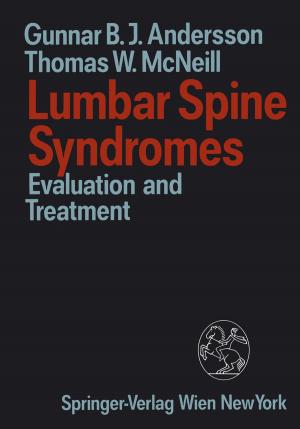Neurosurgical Applications of Transcranial Doppler Sonography
Nonfiction, Health & Well Being, Medical, Surgery, Neurosurgery, Specialties, Internal Medicine, Neurology| Author: | A. Harders | ISBN: | 9783709188682 |
| Publisher: | Springer Vienna | Publication: | December 6, 2012 |
| Imprint: | Springer | Language: | English |
| Author: | A. Harders |
| ISBN: | 9783709188682 |
| Publisher: | Springer Vienna |
| Publication: | December 6, 2012 |
| Imprint: | Springer |
| Language: | English |
In 1981, the Norwegian physiologist and cyberneticist, Rune Aaslid, developed a device which made it possible to apply the transcranial Doppler sonographic technique in man. In 1983, Dr. Albrecht Harders took on the project of working out a clinically practicable method that would allow atraumatic measurements to be made of the blood flow velocity in the large branches ofthe circle of Willis. The technique has now become a competitor of the conventional methods of measuring the intracranial hemodynamics, including angiography and the xenon method of cerebral blood flow measurement. Harders proceeded from the assumption that the measurement of the blood flow velocity is more relevant for clinical diagnoses than the usual volume flow measurements. He stresses the very valuable application of the technique in detecting cerebral vasospasm before and after aneurysm surgery. The changes in the blood flow velocities measured by transcranial Doppler sonography in the individual vessel segments of the circle of Willis are interpreted with respect to the various factors that can effect such changes (collateral circulation in the circle of Willis, diameter of the vessel, vascular resistance, the general cardiovascular situation, arterial partial CO pressure, autoregulatory factors, position of body). The rate of 2 complications associated with angiography has thus been reduced, since the best time both for angiography and for surgery can be determined, and continuous TCD examinations show when the patient is out of a critical phase of cerebral vasospasm.
In 1981, the Norwegian physiologist and cyberneticist, Rune Aaslid, developed a device which made it possible to apply the transcranial Doppler sonographic technique in man. In 1983, Dr. Albrecht Harders took on the project of working out a clinically practicable method that would allow atraumatic measurements to be made of the blood flow velocity in the large branches ofthe circle of Willis. The technique has now become a competitor of the conventional methods of measuring the intracranial hemodynamics, including angiography and the xenon method of cerebral blood flow measurement. Harders proceeded from the assumption that the measurement of the blood flow velocity is more relevant for clinical diagnoses than the usual volume flow measurements. He stresses the very valuable application of the technique in detecting cerebral vasospasm before and after aneurysm surgery. The changes in the blood flow velocities measured by transcranial Doppler sonography in the individual vessel segments of the circle of Willis are interpreted with respect to the various factors that can effect such changes (collateral circulation in the circle of Willis, diameter of the vessel, vascular resistance, the general cardiovascular situation, arterial partial CO pressure, autoregulatory factors, position of body). The rate of 2 complications associated with angiography has thus been reduced, since the best time both for angiography and for surgery can be determined, and continuous TCD examinations show when the patient is out of a critical phase of cerebral vasospasm.















